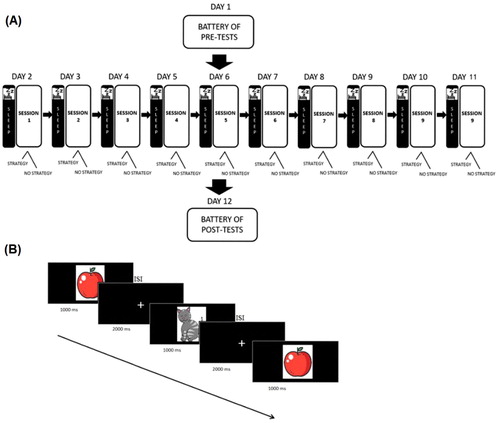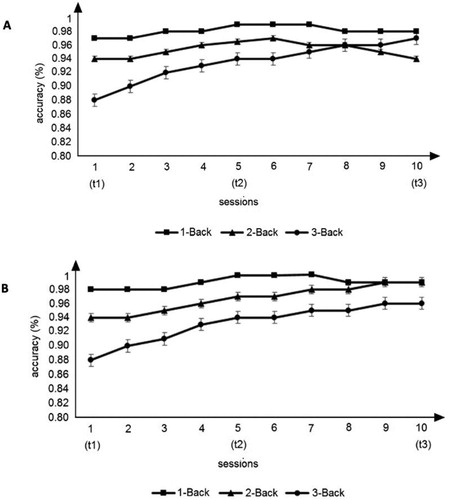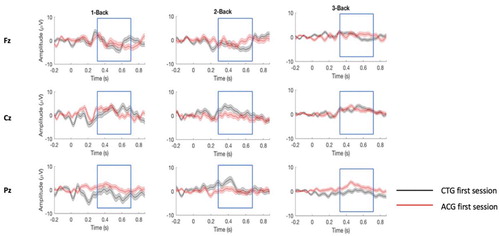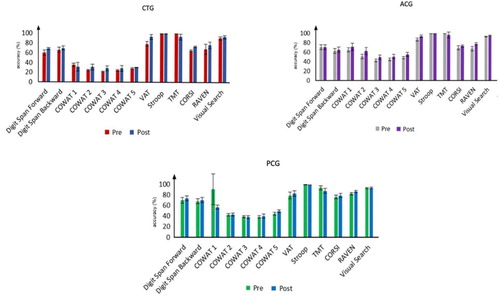Figures & data
Figure 1. Experimental procedure and paradigm. (A) 20 participants included in the two training groups underwent 10 sessions of N-Back training, and were administered pre- and post-tests to assess transfer effects. (B) Example of stimulus sequence during the N-Back task (2-Back), and its timeline.

Table 1. Participants characteristics.
Figure 2. Mean ± SD of accuracy during 10 sessions of N-Back training. (A) Cognitive training performance of the cognitive training group (CTG) in the first (t1), middle (t2) and last (t3) session. (B) Cognitive training performance of the active control group (ACG) in t1, t2 and t3.

Figure 3. ERPs responses comparing the first session of CTG and ACG. P300 responses (target minus non-target) for the first sessions of the 1-Back, 2-Back and 3-Back task (Supplementary data are shown in Table S2).
Notes: CTG = cognitive training group (mental rehearsal); ACG = active control group (self-developed strategy).

Figure 4. ERPs responses comparing the last session for CTG and ACG. P300 responses (target minus non-target) for the last sessions of the 1-Back, 2-Back and 3-Back (Supplementary data are shown in Table S2).
Notes: CTG = cognitive training group (mental rehearsal); ACG = active control group (self-developed strategy).


